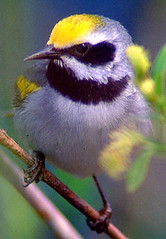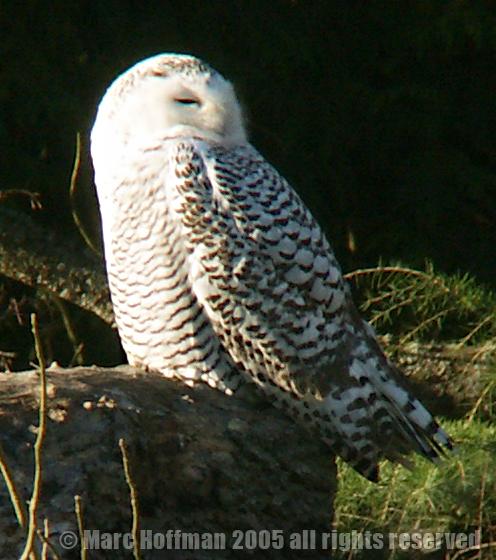
Snowy Owl, Bubo scandiacus.
Currently, there is an irruption of snowy owls in Washington State, USA,
probably due to a disruption in their local food supply.
This individual was photographed in Discovery Park, Seattle.
(more details about this photograph below).Birds in Science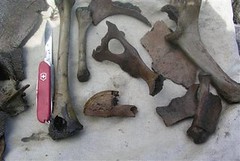
Last week, scientists said they found a
major cache of bones and likely complete skeletons of the
long-extinct Dodo bird,
Raphus cucullatus (pictured), which could help them learn more about the lost creature's physique and habits. The find is significant because no complete skeleton of a single Dodo bird has ever been retrieved from a controlled archaeological site in Mauritius. The last known stuffed bird was destroyed in a 1755 fire at a museum in Oxford, England, leaving only partial skeletons and drawings of the bird to go on. The bird was native to Mauritius when no humans lived there but its numbers rapidly dwindled after the arrival of Portuguese and Dutch sailors in the 1500s. The last recorded sighting of a live bird was in 1663. The international team of researchers found the bones on a sugar cane plantation on Mauritius, located in the Indian Ocean off the east coast of Madagascar. "We have found 700 bones including bones from 20 Dodo birds and chicks but we believe there are many more at the site," said Kenneth Rijsdijk, a Dutch geologist from the Netherlands Organization for Applied Scientific Research, who led the dig. They presented their findings last week at the National Museum of Natural History in the Dutch city of Leiden.
Christmas Bird Count News
Will "winter finches" or northern raptors spread across North America this December? Will snow and ice blanket this continent, or will mild conditions prevail until the New Year? Will observers along the storm-ravaged Gulf Coast be able to discover the effects of this summer's hurricanes on their local birds? More than 50,000 observers in hundreds of locations throughout the United States and Canada, the Caribbean, parts of South and Central America, Bermuda, the West Indies and even a few Pacific Islands will be outside counting birds to find out. The
Christmas Bird Count, also known as the CBC, now under the supervision of the
National Audubon Society, began 106 years ago when ornithologist Frank Chapman and 26 fellow bird enthusiasts replaced the traditional Christmas Day bird hunt with a day of bird observation. The annual Christmas Bird Count starts on 14 December and extends through 5 January in any given year. Each official CBC location consists of a 15 mile-diameter circle. Observers start out before dawn, listening for owl calls, then drive and walk through woods, fields, wetlands and along lakes and streams from dawn to dusk, noting not only how many different species they can find, but the numbers of each species. Participants are not paid for the count. In fact, they each contribute a $5 fee to cover the cost of printing official lists, preparing other materials and publishing the results. For more information, click each link to view;
this year's CBC results and last year's (105th CBC)
photo gallery. You can also start off the new year by
joining the National Audubon Society (always a great gift idea for that person on your list who has everything).
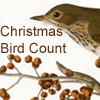
Regional CBC news stories; These are nicely-written stories that I hope you take the time to read.
York-Rock Hill, South Carolina (USA): 4 veteran CBC counters compiled an impressive list of 72 species on 19 December. This report includes a narrative, photographs of some of the birds seen and a very interesting table of their data with links to previous CBC data.
Freeport, Texas (USA): 95 observers identified 208 species on 18 December.
Shreveport, Louisiana (USA): 23 participants counted 116 species on 18 December.
Oakland, California (USA): 150 people spotted 170 species on 18 December. All California CBC data for 2005.
Anchorage, Alaska (USA): 118 volunteer observers counted 43 species on 17 December.
Danville, Kentucky (USA): 26 observers sighted 66 species on 17 December.
Crystal Springs Dam, California (USA): an unknown number of birders counted 192 species recently.
GrrlScientist note: Please email links to your CBC news stories and I will publish them in next week's issue.
Other CBC News
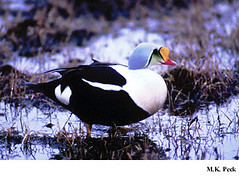 A king eider, Somateria spectabilis (pictured), that nests in the Arctic has been spotted in Banff, Alberta (Canada) -- the first such sighting of the large sea duck in Alberta in more than 100 years. This recent sighting of the immature king eider was recorded by Peter Poole and Reno Sommerhalder on Banff's Lake Minnewanka during the annual Christmas Bird Count last week. "This is a find of a lifetime,'' said Jocelyn Hudon, curator of ornithology at the Royal Alberta Museum and chairwoman of Alberta's bird record committee. "We're talking about a bird that hasn't been seen in the province for over 100 years.''
A king eider, Somateria spectabilis (pictured), that nests in the Arctic has been spotted in Banff, Alberta (Canada) -- the first such sighting of the large sea duck in Alberta in more than 100 years. This recent sighting of the immature king eider was recorded by Peter Poole and Reno Sommerhalder on Banff's Lake Minnewanka during the annual Christmas Bird Count last week. "This is a find of a lifetime,'' said Jocelyn Hudon, curator of ornithology at the Royal Alberta Museum and chairwoman of Alberta's bird record committee. "We're talking about a bird that hasn't been seen in the province for over 100 years.''
People Hurting BirdsThousands of seabirds are being killed each year after a massive rise in
plastics pollution in the North Sea, according to a new report. Studies on the bodies of 600 fulmars that washed up on beaches revealed that 95 per cent had plastic litter in their stomachs - with an average of 40 pieces of plastic per bird. One fulmar had 1,600 pieces of plastic in its guts, according to the Save the North Sea project, which was set up by volunteers and professional organisations in all countries with North Sea coastlines. Fulmars are gull-like tube-nosed seabirds that have a massive breeding colony on St Kilda. They are affected because they mistake discarded plastic floating on the sea's surface for their normal prey, jellyfish. "Plastics pollution is a chronic problem in the North Sea. Heaven knows where some of this plastic comes from. They've found everything from balloons to shotgun cartridges in the birds' stomachs. But the commonest is beads of raw plastic before it is formed," said Mark Grantham from the British Trust for Ornithology.
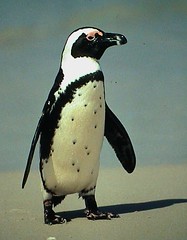
Police ran down leads and the Royal Navy was on alert Thursday in the search for
Toga, an 18-inch-tall baby penguin stolen from an Isle of Wight zoo Saturday night, creating a national soap opera rivaling Elton John's gay union for media coverage. "We're all a bit ragged here, to say the least," said Kath Bright, manager of Amazon World Zoo Park, which has received nearly $13,000 in donations — including $600 from the United States — to offer as a reward for the safe return of the nine-pound South African jackass penguin,
Sphenicus demersis (pictured). As of today, Toga is still missing, and Bright said zookeepers were beginning to worry he could starve to death. Bright said that before the theft, the 3-month-old was still being fed by his father, Oscar, and his mother, Kyala. Because the parents simply regurgitate food directly down the baby's throat, Bright said, Toga wouldn't know how to find his own food and wouldn't accept any from humans. "He hasn't got a clue," Bright said.
Ivory-billed Woodpecker NewsThis winter, 30 full-time research scientists and 112 volunteers — some of them looking from head to toe like balls of shredded camouflage cloth — are combing through thousands of acres of swampy Arkansas woods in search of a
bird called Elvis. That is the affectionate local nickname given to the ivory-billed woodpecker,
Campephilus principalis, a spectacularly shy but showy species that scientists thought had gone extinct around 1944. A dramatic announcement in April that at least one ivory-bill had been spotted here kicked off a massive effort to try to tally how many there are, research how they live and learn how best to protect them. The rediscovery also has turned into a resurrection of sorts for the rare habitat the woodpecker lives in, galvanizing public and private conservation agencies that for decades had been fighting lonely battles to save a few thousand acres of Arkansas’ swamp forests. But unfortunately, no convincing photographs of this bird exist. This winter, with more people looking, better high-tech search and recording gear, and more carefully laid plans, scientists are hopeful they will come up with “slam dunk’’ evidence of the ivory-bill, namely a clear, unambiguous photo or video (
more information).
Avian Influenza News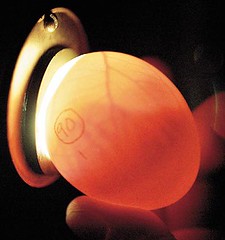
According to a recent study,
bird flu appears more likely to wing its away around the globe by plane than by migrating birds. Scientists have been unable to link the spread of the virus to migratory patterns, suggesting that the thousands of wild birds that have died, primarily waterfowl and shore birds, are not primary transmitters of bird flu. If that holds true, it would suggest that shipments of domestic chickens, ducks and other poultry represents a far greater threat than does the movement of wild birds on the wing. It also would underscore the need to pursue the virus in poultry farms and markets rather than in wild populations of birds if a possible pandemic is to be checked, U.S. and European experts said. ''There is more and more evidence building up that wild migratory birds do play some role in spreading the virus, but personally I believe - and others agree - that it's not a major role,'' said Ward Hagemeijer, a wild bird ecologist with Wetlands International, a conservation group in Wageningen, Netherlands. ''If we would assume based on this evidence that wild birds would be a major carrier of the disease we would expect a more dramatic outbreak of the disease all over the world.'' GrrlScientist note:
I've been saying this very thing for more than one year (relying on incomplete data, unfortunately). I am pleased to see that the epidemiologists are starting to realize where the bird flu threat really is found; with domestic poultry raising and handling practices.The Ornithological Council has published a
peer-reviewed fact sheet on the implications of avian influenza for ornithologists, bird banders, rehabbers, and others who handle live birds. If anyone is willing to translate the fact sheet into Spanish, contact the Ornithological Council through their website and they will post the Spanish version, too.
A conservation group is astonished that Kapiti Island near New Zealand has been suggested as a possible quarantine station if a deadly flu virus hits the Wellington region. Kapiti Island Watching Interest president Hugh Barr said the island had been a
bird sanctuary for more than a century – and should be the last place to isolate humans who could be carrying a mutated bird flu virus. "It is astounding that Wellington's health authorities should be considering quarantining bird flu sufferers in the same place as our endangered kiwi, kaka, takahe, kokako, stitchbirds, saddlebacks and weka," Dr Barr said. "These rare birds are likely to be susceptible to bird flu too." GrrlScientist note:
This makes me realize that the United States isn't the only country in the world that has Really Stupid People in control of things. I am not sure if this is comforting or not.
Scientists are baffled over the case of two bird flu patients in Vietnam. Both patients died after
developing resistance to Tamiflu, the drug that is being stockpiled in case of a flu pandemic. The girls received early and aggressive treatments with Tamiflu using the recommended doses, according to an Associated Press report. Doctors now think they may need to rethink dosages; lower amounts may promote resistance by allowing viruses or bacteria to mutate and make a resurgence, according to the press accounts.
Streaming Birds
For the
last week of 2005,
BirdNote discusses The Myth of the Wren on St. Stephen's Day; Morning in Oaxaca, visiting our summer birds south of the border; Winter on the Columbia River; A Year's Worth of Birds; and for the last show of 2005, Queen Bee in Winter. BirdNote programs are two-minute vignettes that incorporate the rich sounds of birds provided by Cornell University and by other sound recordists, with photographs and written stories that illustrate the interesting -- and in some cases, truly amazing -- abilities of birds. Some of the shows are Pacific Northwest-oriented, but many are of general interest. BirdNote can be heard live, Monday through Friday, 8:58-9:00AM in Western Washington state and Southern British Columbia on
KPLU radio and now also in North Central Washington state on
KOHO radio. All episodes are available in the BirdNote archives, both in written transcript and mp3 formats, along with photographs. Listener ideas and comments are
welcomed. [mp3/podcast].
The discovery of an ivory-billed woodpecker, which many had believed to be extinct, outside Brinkley, Arkansas, has brought profound changes to the town. With hundreds of birders and scientists passing through to catch a glimpse of the bird, locals are
attempting to capitalize on the excitement. National Public Radio's
Morning Edition story. [9:15, RealPlayer or Windoze Media Player required]
Miscellaneous BirdsBirdLife has published their
year in review edition that highlights the non-event of avian influenza, the exciting rediscovery of the Ivory-billed Woodpecker, a list of new avian species recognized this year as well as those species lost forever to extinction, island "super mice" that kill endangered albatross chicks, and the near-collapse of the vulture populations in Asia due to widespread use of a veterinary drug, just to mention a few stories that they cover.
Calm down, Oprah fans! It was ordinary
wear and tear that almost took down Oprah's private plane, not a collision with a bird as originally reported.
Featured Bird Photograph Details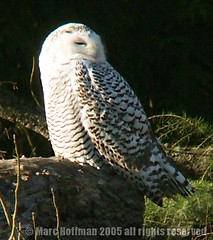 Marc Hoffman
Marc Hoffman says;
The photo was taken on a sunny day at 10:56 a.m. I was about 60 feet from the owl, which was resting on a woodpile in Discovery Park, a large park in urban Seattle. About 8 other birders were present. This owl had been sighted for a few weeks and has been well-watched. At the time the photo was shot, the owl was resting, opening its eyes and turning its head every 10 minutes or so. This is one of a number of snowy owls reported recently in Western Washington. Several others have been sighted in and around Seattle, including one that perched on the second floor of an office building in nearby downtown Bellevue. The camera I used is a Minolta DiMage A2 with a Raynox DCR 2020 Pro (2.2x) teleconverter attached, providing an effective zoom of 15.4x. More photographic details are available on request from Marc or from me.
The Fine Print: Thanks to my bird pals, Caren, Bill, Ellen P., Wise Crow, Ian, Mike, Ellen B. and Ron for some of the news story links that you are enjoying here. Thanks to Jamie and Ian for reminding me that the generic name for Snowy Owls was changed to Bubo scandiacus.
Best regards to John B. his $upport. Special thanks to long-time readers, Jamie, Tony and anonymous blog reader, for surprising me by nominating Birds in the News
for a 2005 Koufax Award for Best Series! There will be an announcement here, along with more details, when voting begins. As an aside, it has come to my attention that Internet Explorer does not respect the formatting of this blog. I apologize because I am not sure how to rectify this situation except to say that this blog looks best when viewed with Firefox.Previous : : Birds in the News : : Next
tags: Birds in the News, ornithology, birds, avian, newsletter

Survival Job rejections: 1 (I applied for a survival job as an adjunct at this one particular school, but they put my application in with the tenure-track medical school applicant pool for reasons I cannot comprehend. Today, I received their rejection letter!! I was rejected for a position that I never applied for! I hope this mix-up is not indicative of the quality of their medical training, although I do have my doubts.)



 Last week, scientists said they found a
Last week, scientists said they found a 


 Police ran down leads and the Royal Navy was on alert Thursday in the search for
Police ran down leads and the Royal Navy was on alert Thursday in the search for 
 Scientists are baffled over the case of two bird flu patients in Vietnam. Both patients died after
Scientists are baffled over the case of two bird flu patients in Vietnam. Both patients died after 





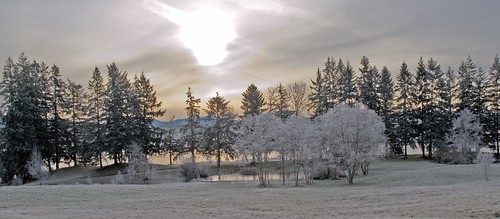
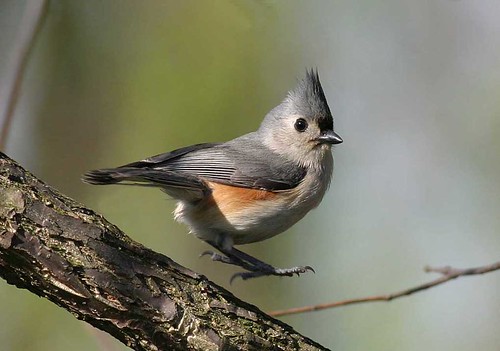
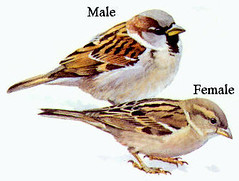
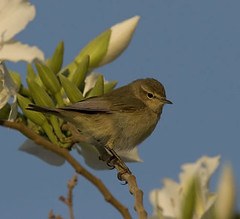
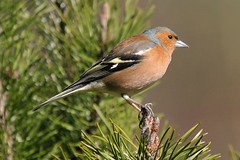
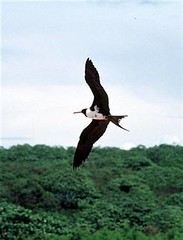
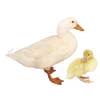 Two domestic ducks have been rescued after two residents found them swimming among wild ducks in a corner of the library's mostly frozen duck pond. "I'd hate to come out here someday and see them frozen," said Diane Holmgren, at the duck pond before the rescue last week, where she walks nearly every day with her husband, Frank. Holmgren called animal control, the Humane Society and Recreation and Parks, afraid that the ducks wouldn't survive the winter. Unfortunately, these birds are not as unusual as one might think. In fact, they are part of a growing national problem known as
Two domestic ducks have been rescued after two residents found them swimming among wild ducks in a corner of the library's mostly frozen duck pond. "I'd hate to come out here someday and see them frozen," said Diane Holmgren, at the duck pond before the rescue last week, where she walks nearly every day with her husband, Frank. Holmgren called animal control, the Humane Society and Recreation and Parks, afraid that the ducks wouldn't survive the winter. Unfortunately, these birds are not as unusual as one might think. In fact, they are part of a growing national problem known as 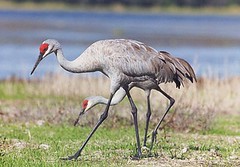

 As you know, dear readers, I live in NYC, so you might imagine that I, along with several million other New Yorkers, have been impacted by the public transit strike. But throughout the night, I was in denial that this strike would actually occur; after all, I could still hear the elevated trains roaring through the darkness as late as two in the morning. Early this morning, I awoke to an ominous silence, a stillness that was formally confirmed when the awful truth was announced on the radio; transit strike! I briefly thought about investing the day in restoring order to my neglected apartment while teaching my birds to say a few foul words. But, being the wanderer that I am, that thought was too much to bear. Instead, I decided that I had to get out, even if I did have to walk eight million miles each way in the freezing weather to get to my destination.
As you know, dear readers, I live in NYC, so you might imagine that I, along with several million other New Yorkers, have been impacted by the public transit strike. But throughout the night, I was in denial that this strike would actually occur; after all, I could still hear the elevated trains roaring through the darkness as late as two in the morning. Early this morning, I awoke to an ominous silence, a stillness that was formally confirmed when the awful truth was announced on the radio; transit strike! I briefly thought about investing the day in restoring order to my neglected apartment while teaching my birds to say a few foul words. But, being the wanderer that I am, that thought was too much to bear. Instead, I decided that I had to get out, even if I did have to walk eight million miles each way in the freezing weather to get to my destination. 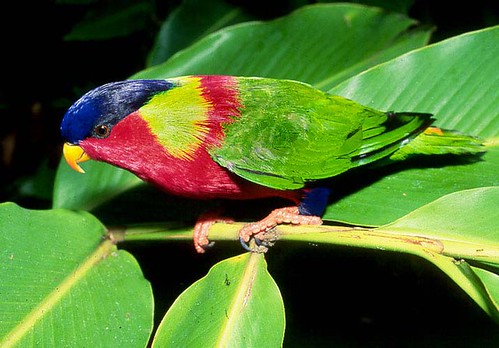
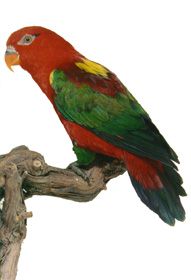
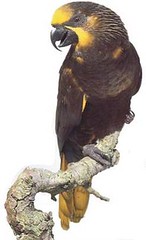
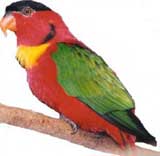




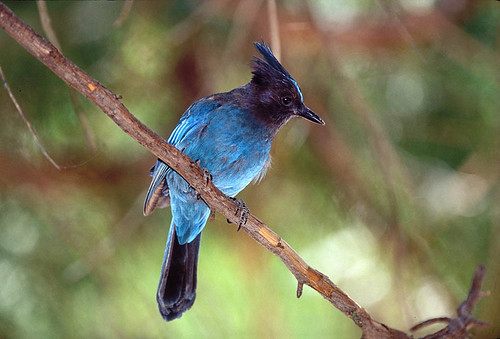
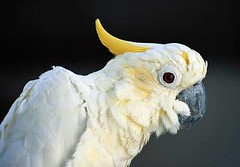 The Australian Government's Regional Natural Heritage Programme (RNHP) has awarded AU$193,000 to
The Australian Government's Regional Natural Heritage Programme (RNHP) has awarded AU$193,000 to 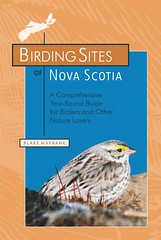 Would you like to help test drive a unique new web site for birders? Blake Maybank created
Would you like to help test drive a unique new web site for birders? Blake Maybank created 